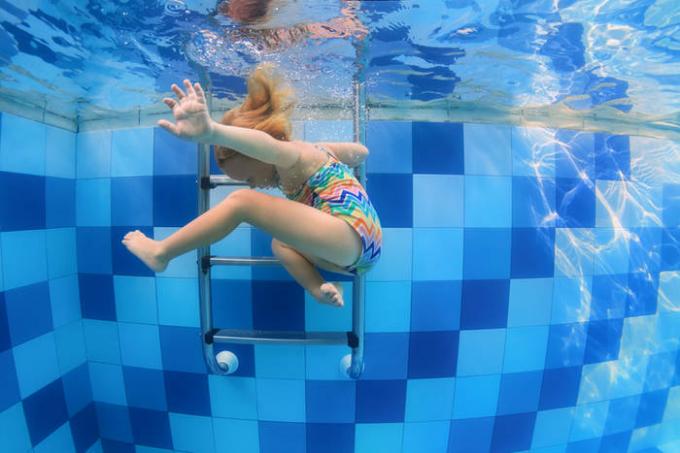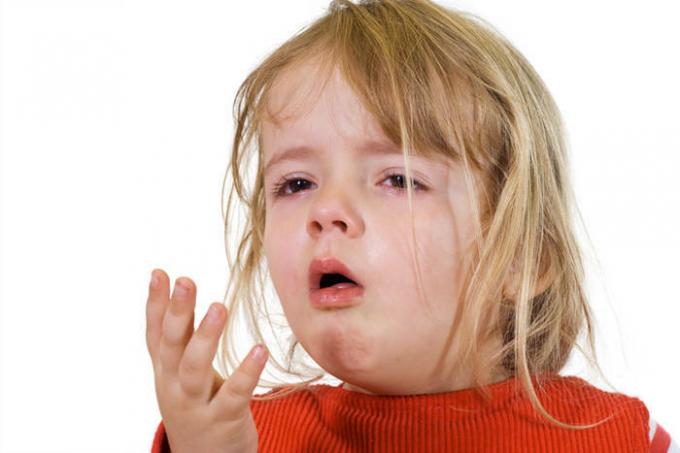What is secondary drowning, how is it dangerous and how it manifests itself. Signs of secondary and dry drowning, in which the child urgently needs to be taken to the doctor
Bathing is one of the main fun for children. But at the same time, one of the biggest risks for a child in the summer. According to statistics, since the beginning of the bathing season in Ukraine, almost 400 people have already drowned, and 64 of them are children. Drowning a child is a terrible tragedy for parents, but there is another, less obvious danger. This is a secondary or dry drowning, when the child dies a couple of hours after leaving the water. Why this happens, and in what situations parents need to be vigilant, said experts of the All-Ukrainian Union of Paramedics.
What is Secondary Drowning

Secondary drowning can develop even after the pool / istockphoto.com
Secondary drowning is also called deferred. Most often, it happens after the child has drowned and has been pumped out. In this case, some of the water still remains inside the respiratory system. It causes inflammation of the bronchi and pulmonary edema that blocks the airways. Because of this, it becomes difficult for the child to breathe at first, and then the edema completely blocks the access of oxygen to the body.
Secondary drowning takes 2 hours to several days to develop. According to statistics, death usually occurs at night. Parents are relieved to think that they have escaped a terrible tragedy, put the child to bed, and he no longer wakes up.
It is important to know that secondary drowning can occur without the child drowning before. To do this, simply swallow water while diving or active games in the pond. At the same time, the child will visually look absolutely healthy. At first, until pulmonary edema begins. Several years ago in the United States, there was a case where a 10-year-old boy died from secondary drowning after returning home from a swimming pool.
How dry drowning is different
Dry drowning differs from secondary drowning in that the child may not have water in the lungs. If during swimming there was a danger of drowning, a natural defensive reaction develops in the body. Respiratory puffs spasm to prevent water from entering the lungs. However, at the same time, the spasm also blocks the air supply. The spasm may not be strong at first, but it tends to get worse. Doctors say dry drowning symptoms usually develop within 24 hours.
Symptoms of secondary and dry drowning

After the beach, pay attention to the child's cough and sleepiness / istockphoto.com
In both cases, the symptoms will be the same. Therefore, you do not need to guess and think for a long time if, after bathing, you notice the following manifestations in a child:
- difficulty breathing with short breaths, trying to catch your breath
- persistent continuous cough
- severe and uncharacteristic fatigue for a child
- suspicious drowsiness
- pain and discomfort in the chest area
- atypical behavior (irritability, forgetfulness)
- slow reaction and impaired coordination of movements
- "Blue" lips or fingers (due to oxygen deficiency)
Important Tips for Parents

Swimming with children should be at arm's length / istockphoto.com
All or several of the symptoms listed above are a clear sign that the child needs to be urgently seen by the doctor. Do not hesitate to "overdo it", because in this situation, caution is never excessive and can literally save the life of a child. At the hospital, they will listen to him to determine if there is water in the lungs, they can send him to an x-ray and unmistakably diagnose a spasm of the respiratory tract (if any).
It is also worth showing the child to the doctor if there was an incident during bathing when the child was drowning or nearly drowned. Even if it was “short” and the child feels normal. The danger of secondary drowning is that it is impossible to predict when and in whom it will develop. Therefore, it would be better to exclude the problem in advance.
To avoid trouble, be sure to adhere to safety rules for swimming with children. Never let them out of sight. To choke, the baby only needs a depth of 6-8 cm. Especially if one of the bathers unexpectedly pushed him under the water. Therefore, with children who do not know how to swim, adhere to the rule of an outstretched hand: you should be at such a distance from the child that at any second you can pick him up and pull him out of the water.
Even if your child can swim, stay alert. Indeed, in the water, it can become elementary for him. He can get scared, panic and lose control over himself - as a result, he will not float out of the water even at a shallow depth. Don't discount the occasional wave or current: in open water, it's enough for a child to sink.
You will also be interested to read:
Swimmer's ear: how to avoid ear inflammation on the beach
In panties or without: what diseases are naked children at risk of catching on the beach



